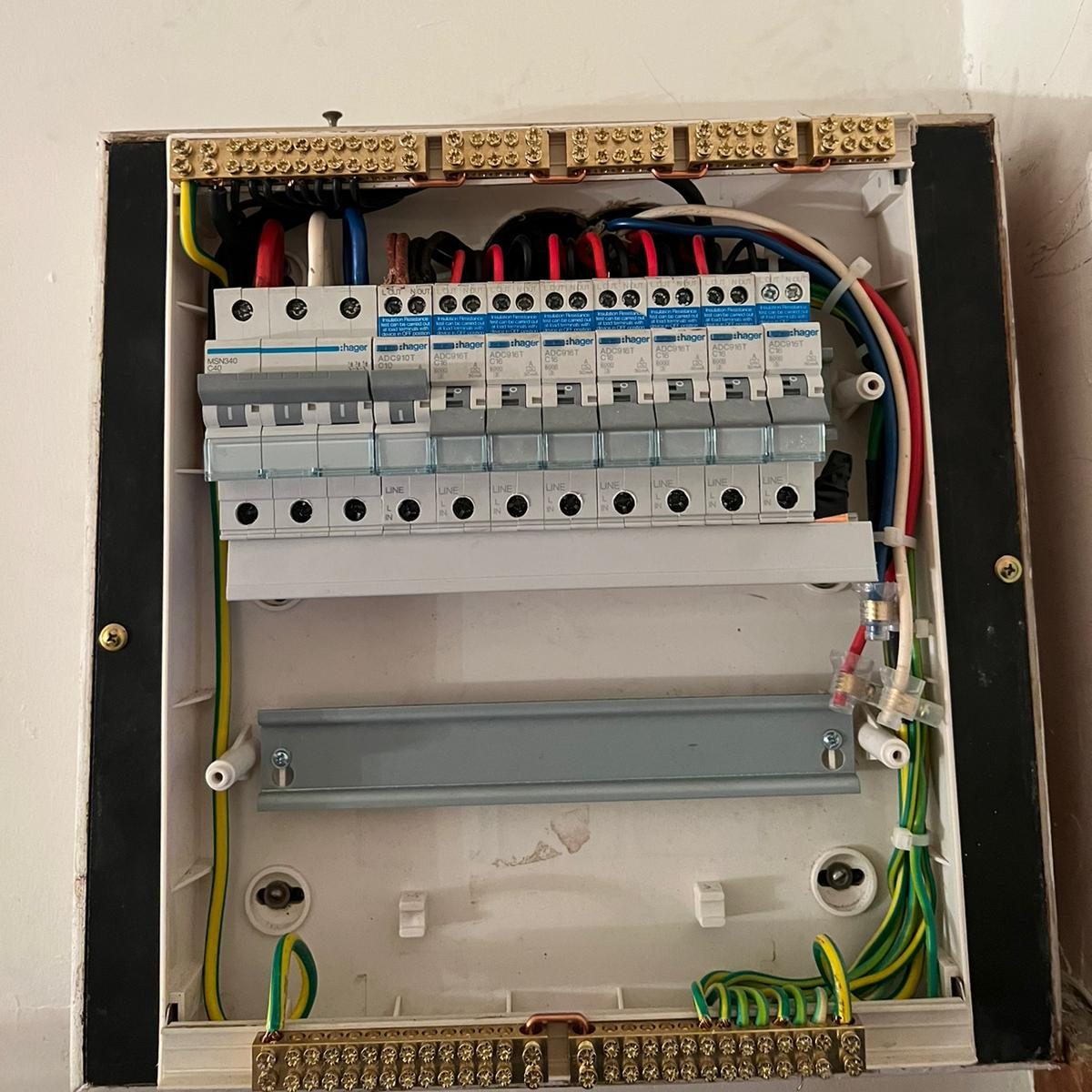Understanding the Underlying Causes of a Blown Fuse Box and Their Implications
A fuse box may blow for a variety of reasons, including overloaded circuits, short circuits, faulty appliances, or the gradual deterioration of ageing components. Older fuse boards, particularly those using ceramic fuses, are particularly susceptible to failure as their components age. When a fuse blows, it acts as a critical warning signal that the electrical system has exceeded its safe operational capacity, making it essential to conduct an immediate inspection to prevent further complications and potential hazards.

A Blown Fuse Box: More Than Just an Inconvenient Power Outage – It Indicates a Serious Electrical Issue!
Residents in Melbourne’s western suburbs frequently contact us regarding unexpected power outages. Whether the cause is burnt wiring, melted electrical tape, or repeated circuit tripping, understanding the underlying issues is vital for safety and peace of mind. This article aims to offer a thorough overview of the potential problems affecting your electrical system and provide the best steps to take next to restore both safety and functionality within your home.
1. Spotting the Warning Signs of a Blown Fuse Box
While not every power outage signifies a malfunctioning fuse box, there are specific signs to be vigilant for. These indicators include:
- Partial or complete power loss affecting your home
- Inability to reset one or more circuits after they have tripped
- A burning plastic odour near the fuse board, which may suggest potential overheating
- Visible black markings or melted plastic around the fuses, indicating damage
- Ceramic fuse wire that has snapped or completely disintegrated
If you’re uncertain about the condition of your fuse box, our Emergency Electricians are readily available to inspect, repair, or safely replace any faulty components, ensuring your electrical system operates effectively and safely.
2. Identifying the Common Causes Behind a Blown Fuse
Overloading Circuits with Multiple High-Power Appliances
Operating multiple high-draw appliances on a single circuit can easily exceed the fuse’s amp rating. For example, using your oven, kettle, and toaster simultaneously can lead to an overload condition. This places undue stress on the fuse, significantly increasing the risk of it blowing and potentially creating a fire hazard that could endanger your home and family.
Short Circuits Caused by Damaged Wiring
A short circuit can occur if there’s compromised wiring or a malfunctioning appliance that diverts the electrical current from its intended path. This situation can lead to an immediate fuse blow or a circuit breaker trip, presenting a dangerous scenario that necessitates urgent attention from a certified electrician to rectify the issue effectively.
Age-Related Deterioration of Electrical Components
As time passes, older ceramic fuses may suffer from corrosion, loosening, or overall degradation. As heat builds up due to inefficient electrical flow, the fuse may ultimately burn out, indicating an immediate need for replacement and possible upgrades to modern standards to enhance reliability and safety in your electrical system.
Problems Arising from Incorrect Fuse Wire Installation
It’s not uncommon to encounter incorrect wire ratings in fuse installations, either with wires that are too weak, leading to frequent blows, or too strong, posing significant dangers by failing to adequately protect the circuit. Ensuring the correct type of fuse wire is installed is crucial for both safety and optimal functionality.
-
 Old Ceramic Plugs
Old Ceramic Plugs -
 Now Upgraded
Now Upgraded
3. Evaluating the Safety Features: Ceramic Fuses Versus Modern Circuit Breakers
If your home still relies on ceramic plug-in fuses, it is crucial to consider upgrading your switchboard. Ceramic fuses are:
- Slower to trip in the event of a fault
- More susceptible to unsafe bypassing by users
- Prone to user errors, such as incorrect fuse wire installations or poor connections
- Provide no protection against electric shocks, leaving users vulnerable
In contrast, modern switchboards utilise circuit breakers and RCDs (Residual Current Devices). These contemporary devices trip automatically and can reset quickly without the need for physical wire replacement. If your fuse box resembles a relic from the 1970s, it’s certainly time for a Switchboard Upgrade to enhance both safety and reliability within your home.
4. Essential Steps to Take When Encountering a Fuse Box Issue
If you’re only dealing with a tripped breaker, you can follow these recommended steps:
- Unplug all appliances connected to that specific circuit to alleviate the load
- Carefully attempt to reset the switch
- Gradually reconnect items one by one to identify the source of the issue
- If the breaker trips again, leave it off and contact us for immediate assistance

What to Do When You Encounter a Ceramic Fuse Problem
- Do NOT attempt to replace the fuse wire unless you are a licensed electrician, as this can be dangerous and illegal
- Avoid any DIY repairs, as they may pose safety risks and could violate regulations
- Switch off power at the main switch and contact Electrx for professional assistance
5. Our Comprehensive Methodology for Repairing Blown Fuse Boxes
Our professional team begins the repair process by isolating the fault and conducting thorough circuit tests using safe, industry-standard tools. Our systematic approach includes:
- Identifying the exact cause of the blown fuse
- Testing appliances to ascertain if they are contributing to the problem
- Replacing any burnt or damaged fuse carriers
- Upgrading to a circuit breaker or RCBO where applicable
- Issuing a Certificate of Electrical Safety for all completed work to ensure compliance with regulations
If your fuse board is outdated, we will discuss options for modernising it, integrating RCD protection, and optimising circuit layouts for improved safety and efficiency.
When to Reach Out to a Qualified Electrician for Assistance
Experiencing a blown fuse once may merely be an unfortunate occurrence. However, if this issue recurs or if your fuse box shows signs of significant ageing, it’s critical to take proactive measures. Reach out to Electrx to have your system thoroughly inspected, identify any faults, and ensure the problem is resolved effectively during the first visit. We are dedicated to keeping your power running smoothly and ensuring your home remains safe.

Request Your Free Quote Today!
Learn About Our Complimentary Electrical Inspections

Frequently Asked Questions Regarding Blown Fuse Boxes and Their Associated Issues
Can I replace a fuse wire by myself?
NO. In Victoria, replacing or rewiring ceramic fuses is classified as electrical work and must be performed by a licensed electrician to ensure safety and compliance with regulations.
Is a blown fuse dangerous?
Yes, it can be particularly hazardous if the cause is a short circuit or overload. If left unresolved, these issues can escalate into serious fire hazards or pose risks of electric shock.
What is the average cost to repair a blown fuse box?
Basic repairs typically start from a few hundred dollars. Should a complete upgrade be necessary, we will provide you with a clear, fixed quote before commencing any work.
Do you offer after-hours emergency services?
Yes, we provide 24/7 emergency services to address blown fuses and restore your power safely and efficiently.
Get Your Free Quote Today!
Inquire About Our Complimentary Electrical Inspections

The Article: Blown Fuse Box: Essential Tips and Next Steps first appeared on https://writebuff.com
The Article Blown Fuse Box: Key Tips and Actions to Take Next Was Found On https://limitsofstrategy.com

